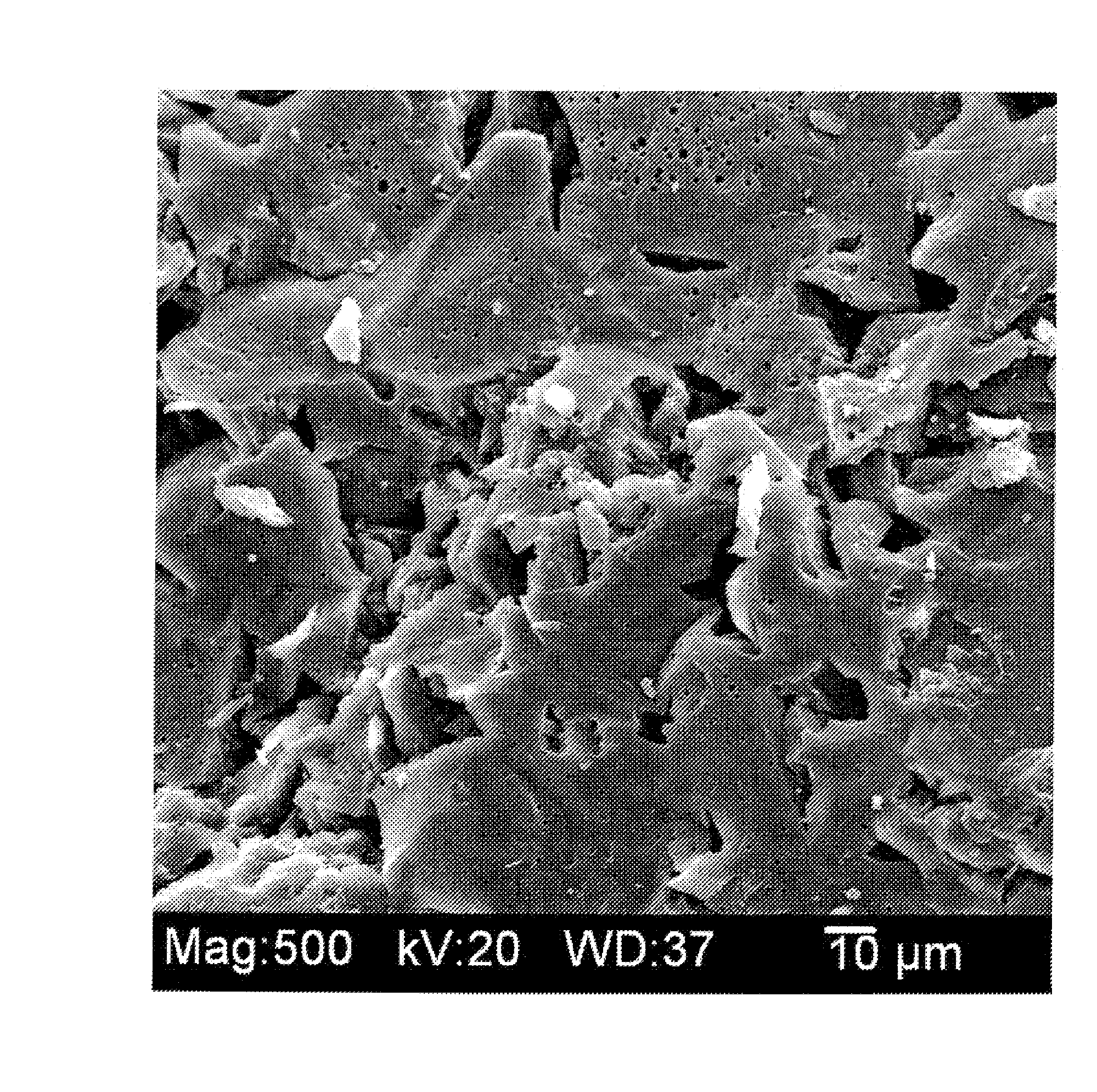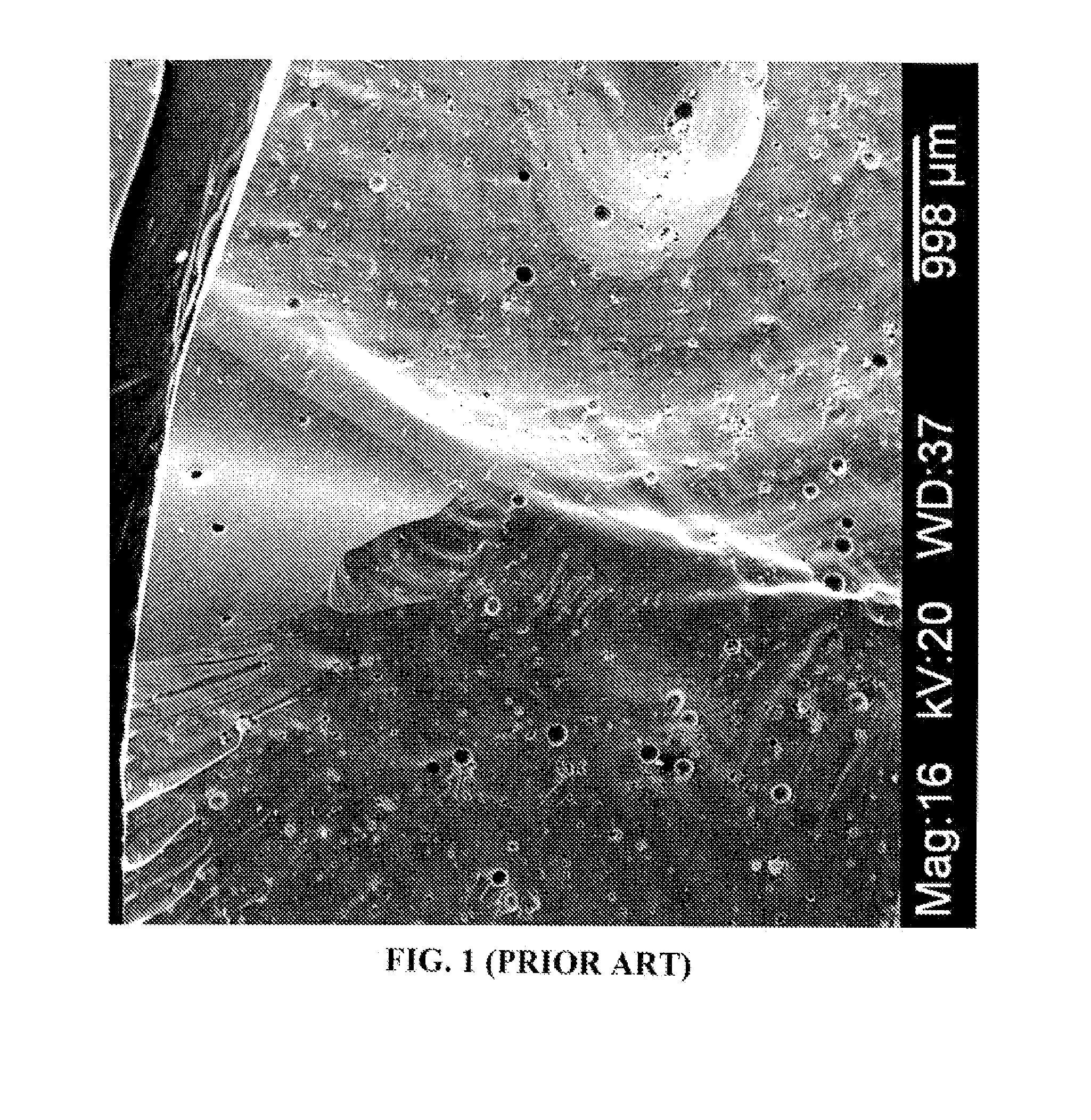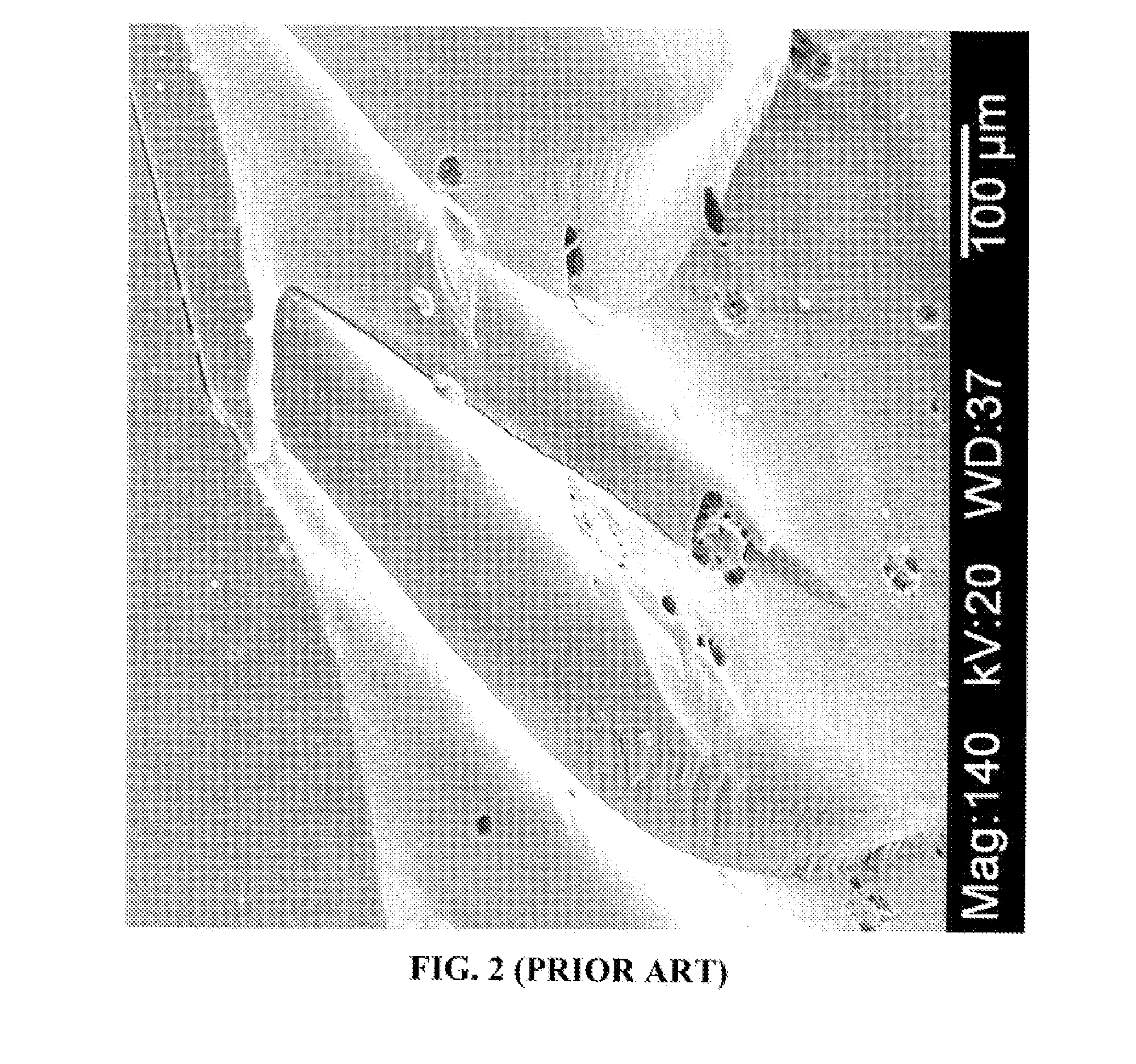Biphasic nanoporous vitreous carbon material and method of making the same
a nanoporous vitreous carbon and nanoporous carbon technology, applied in ceramicware, textiles and papermaking, other domestic articles, etc., can solve the problems of inability to form large-size vitreous carbon articles with appropriate structural integrity and commercial utility, and the effort to achieve commercially useful metal-reinforced carbon composites
- Summary
- Abstract
- Description
- Claims
- Application Information
AI Technical Summary
Benefits of technology
Problems solved by technology
Method used
Image
Examples
Embodiment Construction
[0022] The present invention relates to a new vitreous carbon material having utility for tribological applications, and characterized by a biphasic nanoporous morphology.
[0023] X-ray diffraction (XRD) and scanning electron microscopy (SEM) studies confirm the vitreous carbon of the invention as a novel composition having a heterogeneous character as opposed to the amorphous character of heretofore known forms of vitreous carbon. Further, the vitreous carbon of the invention has a density that is lower than such known forms of vitreous carbon.
[0024] The novel vitreous carbon of the invention can be utilized in various applications as a base material and for composites in which the vitreous carbon of the invention is employed as a continuous phase in combination with other materials, such as for example discontinuous or reinforcing media such as copper and other metals, in powder, fiber or other discontinuous or finely divided form, or carbon powder or fibers, silicon carbide powde...
PUM
| Property | Measurement | Unit |
|---|---|---|
| density | aaaaa | aaaaa |
| temperature | aaaaa | aaaaa |
| ram pressure | aaaaa | aaaaa |
Abstract
Description
Claims
Application Information
 Login to View More
Login to View More - R&D
- Intellectual Property
- Life Sciences
- Materials
- Tech Scout
- Unparalleled Data Quality
- Higher Quality Content
- 60% Fewer Hallucinations
Browse by: Latest US Patents, China's latest patents, Technical Efficacy Thesaurus, Application Domain, Technology Topic, Popular Technical Reports.
© 2025 PatSnap. All rights reserved.Legal|Privacy policy|Modern Slavery Act Transparency Statement|Sitemap|About US| Contact US: help@patsnap.com



